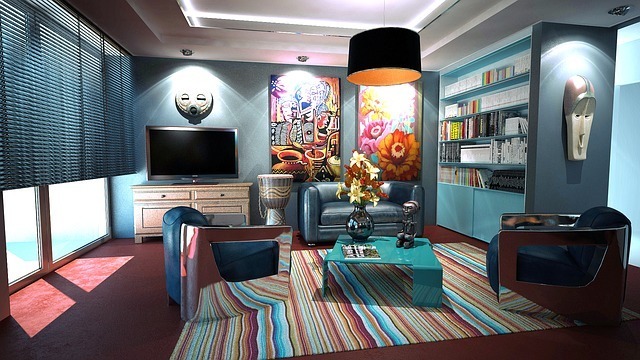Music reproduction in a listening room is very complex, especially high-quality music reproduction. It depends on room acoustics and many inter-related electromechanical and electronic components, such as:
More...
- Musical instruments
- Microphones
- Recording amplifiers
- Recorders
- Processors
- Encoders
- Music files, CDs
- Players
- Decoders
- Pre-amplifiers
- Power amplifiers
- Speakers
- Etc.
Music reproduction is also influenced by the acoustical properties of the recording environment and the listening room, the physical space where it occurs:
- Concert hall or recording studio
- Audio engineer’s monitoring room
- Listening room acoustics where music is finally reproduced.
Additionally, the perception of reproduced music also depends on many biological and human factors, such as:
- Functioning of human ears and auditory system
- Expertise and judgement of the recording engineer
- Experience and attention of the listeners
- Taste for musical experience
- Etc.
It is truly a triumph of science and technology that music can be reproduced with such accuracy and fidelity. Sometimes fidelity seems almost approaching perfection. See Ref. [1]
This article discusses only one factor in music reproduction – the home listening room. Although there are many issues related to the listening room, I will discuss only the issue of sound reflections within the listening room. The information presented here is extracted from an excellent and comprehensive book: Sound Reproduction, Loudspeakers, and Rooms, Second Edition (2013) by Floyd E. Toole. I highly recommend this book to anyone interested in this subject in depth.
Original Music vs. Reproduced music
Most of the music that we enjoy listening to on a day-to-day basis is reproduced music. Listening to original music is rare compared to our frequent exposure to produced music.
Original or live music is performed in concert halls. A listener in a concert hall is immersed in a sound field resulting from interactions of sound from musical instruments and reflections from the boundaries of the concert hall. The function of the music reproduction system is to re-create an impression of the concert hall listening experience in the home listening room. (Synthesized music, or music otherwise artificially created, is not discussed in this article).
In a listening room, the sound is created by speakers. What the listener hears is a combination and interaction of the sound from the speakers and reflections from the physical boundaries of the room (walls, ceiling, floor, and furniture). There is considerable discussion among audiophiles about how much and from which directions the reflections ought to be within the listening room to optimize the listening experience.
There are two distinct modes of music reproduction (Ref. [2]):
- Stereo music reproduction
- Multichannel (surround-sound) music reproduction.
Listening room acoustics for multichannel music
The latest multichannel music reproduction systems are designed to reproduce the acoustic field, and thus the listening experience, of the original performance in a concert hall. This is achieved by having multiple speakers surrounding the listener, reproducing sound from several directions. It is, therefore, desirable to minimize the sound reflected from the boundaries of the room (walls, floor, and ceiling), as these reflections may interfere with the sound produced by the speakers.
A listening room designed for multichannel music listening should therefore contain sound absorption and diffusion on many surfaces, especially at the first reflection points between the speaker locations and the listening location. This approach is true if we create a single “sweet spot” within the listening room to achieve an optimized listening experience. Ref. [3]
In practice, a listening room designer intends to create a larger seating area that will provide a good, if not optimal, listening experience. This complex design task involves the coordination of speakers and room acoustic properties that is beyond the scope of this article. See ref. [4]
This video provides a good illustration of listening room acoustic treatment. Keep in mind, however, that the level of treatment described here is inappropriate for a stereo listening room, as will be explained shortly.
Listening room acoustics for stereo music
Some consider stereo music reproduction to be obsolete. However, if implemented with high-accuracy recordings and speakers, stereo music still provides a high sound quality and listening experience.
Stereo music reproduction is fundamentally different from multichannel music reproduction. Sound is produced from only two speakers, and the perceived soundstage is an illusion created by interactions of direct and reflected sound, as well as psychoacoustics properties of the human auditory system. For the best imaging of the sound stage, some reflection from the side walls is desirable. See ref. [5]
Sound absorbers and diffusers improve listening room acoustics
Sound absorbers and diffusers are part of an optimal acoustic design of listening rooms. However, there is a misconception that any sound-absorbing material is sufficient (curtains, velvet fabric, acoustic foam, etc.). This is not true. A thin material will only absorb high frequencies and introduce coloration to the sound. In order for an absorber or a diffuser to have reasonably wide frequency characteristics, it must be thick. An absorber, to be effective at low frequencies (below 500 Hz), must be 3 to 4 inches thick. Ref. [7]. Similarly, a properly engineered diffuser needs to be 8 inches deep, or more. Ref. [8]
References:
[1] Sound Reproduction, Loudspeakers and Rooms by Floyd E. Toole, 2nd Edition (2013), Focal Press; page 4
[2] ibid. page 496
[3] ibid. page 507
[4] ibid. page 328
[5] ibid. page 119
[6] ibid. page 120
[7] ibid. page 482
[8] ibid. page 489
If you wish to request a consulting visit by the author, use the button below.
I always appreciate your feedback about this article or any other acoustic topic. Please fill in the form below to submit your feedback.
